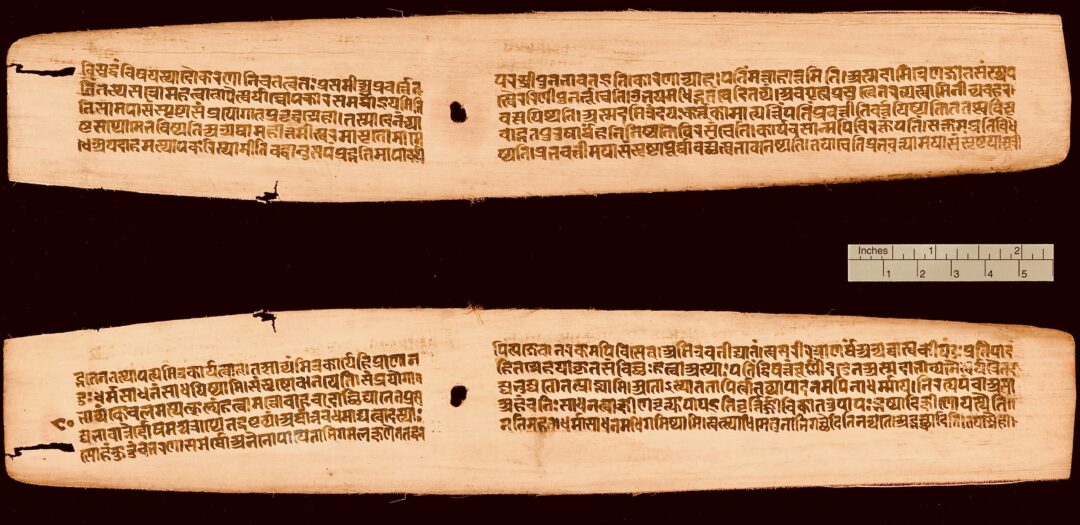Nyaya Darshan: Navigating the Depths of Ancient Indian Logic and Epistemology
In Hindi Nyaya literally means justice. As per my understanding this darshana puts forward the logical and ie real aspect infront of us.
Nyaya Darshan, one of the 6 classical schools of Indian philosophy that we call Shat Darshana, offers a profound exploration of logic, epistemology, and metaphysics.
Read Yogadarshana of Maharishi Patanjali
Rooted in the rich tapestry of ancient Indian thought, Nyaya, attributed to the sage Gautama (Akshapada), unfolds a systematic framework that transcends time, delving into the essence of knowledge acquisition and the nature of reality.
In this detailed 2000-word exploration, we will unravel the historical roots, key concepts, and enduring relevance of Nyaya Darshan.
Historical Roots and Development:
The origins of Nyaya Darshan can be traced to the Nyaya Sutras, a foundational text traditionally attributed to Gautama. This treatise, dating back to around the 2nd century BCE, serves as the cornerstone of Nyaya philosophy. Gautama, also known as Akshapada, systematically organized the principles of logical reasoning and epistemology, laying the groundwork for Nyaya’s subsequent development.
Nyaya gained prominence during the classical period, flourishing alongside other philosophical schools such as Samkhya, Yoga, Mimamsa, Vedanta, and Vaisheshika. The Nyaya Sutras, composed in a succinct and aphoristic style, provide a structured approach to systematic analysis, logical reasoning, and the pursuit of valid knowledge.
Key Concepts of Nyaya Darshan:
- Pramana (Means of Knowledge): Nyaya identifies four primary means of acquiring valid knowledge, known as pramanas. These are perception (pratyaksha), inference (anumana), analogy (upamana), and verbal testimony (shabda). Each pramana plays a distinct role in the epistemological framework. Perception, derived from direct sensory experience, is considered the most reliable, forming the bedrock of knowledge acquisition.
- Prameya (Objects of Knowledge): Nyaya classifies objects of knowledge into sixteen categories, known as padarthas. These include substances (dravya), qualities (guna), actions (kriya), and universals (samanya), among others. This exhaustive categorization provides a comprehensive lens through which to analyze and understand the multifaceted nature of reality.
- Syllogism and Logic: Nyaya places a strong emphasis on the formulation of valid arguments and syllogisms. The Nyaya Sutras meticulously outline the structure of logical reasoning, establishing rules for inference and debate. The Nyaya system of logic, with its emphasis on systematic analysis, has played a pivotal role in shaping the intellectual landscape of ancient India.
- Hetu (Reason) and Vyapti (Invariable Concomitance): In Nyaya, an argument is built upon a hetu, a reason or premise, which is supported by vyapti, the invariable concomitance between the hetu and the conclusion. This logical framework ensures the validity of the argument and contributes to the systematic analysis of knowledge.
- Fallacies and Debates: Nyaya scholars extensively explored various types of fallacies and errors in reasoning. The recognition and avoidance of fallacious arguments are considered crucial in the pursuit of true knowledge. The tradition of philosophical debates, known as ‘Vada,’ has been a hallmark of Nyaya, fostering intellectual exchange and refinement of ideas.
Enduring Relevance of Nyaya:
- Philosophical Foundations: Nyaya provides a robust philosophical foundation for understanding reality and acquiring knowledge. Its systematic approach to logic and epistemology continues to influence contemporary discussions in philosophy and cognitive science.
- Ethical and Legal Implications: The emphasis on logical reasoning and systematic analysis in Nyaya has far-reaching implications for ethics and law. The principles of fair argumentation and the recognition of fallacies find resonance in ethical deliberations and legal discourse.
- Interfaith Dialogue: Nyaya’s emphasis on reasoned debate and systematic analysis has facilitated interfaith dialogue in India. The tradition of philosophical debates has been a means of intellectual exchange among different schools of thought, fostering mutual understanding.
- Contribution to Scientific Thinking: The Nyaya emphasis on empirical observation, inference, and logical analysis aligns with scientific thinking. The systematic approach to knowledge acquisition laid down by Nyaya has parallels with the scientific method, showcasing its relevance beyond the realm of philosophy.
- Influence on Other Philosophical Schools: Nyaya has not only stood on its own but has also influenced and been influenced by other classical Indian philosophical schools. Its integration with schools like Vaisheshika and Mimamsa has enriched the tapestry of Indian philosophical thought, highlighting its dynamic and interconnected nature.
If you would like to study more on this topic I would recommened to read
Conclusion:
In conclusion, Nyaya Darshan stands as a testament to the intellectual prowess of ancient Indian philosophers. Its systematic exploration of logic, epistemology, and metaphysics provides a timeless guide for understanding the intricacies of knowledge acquisition and the nature of reality. As we navigate the complexities of the modern world, the principles and insights of Nyaya continue to inspire critical thinking, rational inquiry, and the pursuit of truth, serving as a bridge between the ancient and the contemporary.
This article contains affiliate links.
Shat Darshan – Nyaya Darshan by Maharishi Gautam Shat Darshan – Nyaya Darshan by Maharishi Gautam


No Comments